MG-3000-A-9V-R Digital Pressure Gauge: Datasheet, Features, Application
MG-9V Series Vented Gauge Pressure Sensor Wheatstone Bridge -10°C~60°C 3000PSI (20684.27kPa) Threaded ±0.25% LCD Display 9V









MG-9V Series Vented Gauge Pressure Sensor Wheatstone Bridge -10°C~60°C 3000PSI (20684.27kPa) Threaded ±0.25% LCD Display 9V
The MG-3000-A-9V-R is a stand-alone 9V battery operated multi-functional digital pressure gauge from MG-9V Model Series.
MG-3000-A-9V-R Digital Pressure Gauge
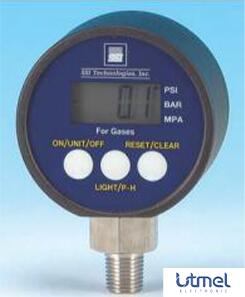
MG-3000-A-9V-R Description
The MG-3000-A-9V-R is a stand-alone 9V battery operated multi-functional digital pressure gauge from MG-9V Model Series. It contains a media isolated piezoresistive pressure sensing element, signal conditioning circuitry for temperature and calibration compensation, a 304L stainless steel input pressure port and an LCD backlit display.
Specifications
- TypeParameter
- Factory Lead Time15 Weeks
- Package / Case
refers to the protective housing that encases an electronic component, providing mechanical support, electrical connections, and thermal management.
Module Box with Display - Supplier Device Package
The parameter "Supplier Device Package" in electronic components refers to the physical packaging or housing of the component as provided by the supplier. It specifies the form factor, dimensions, and layout of the component, which are crucial for compatibility and integration into electronic circuits and systems. The supplier device package information typically includes details such as the package type (e.g., DIP, SOP, QFN), number of pins, pitch, and overall size, allowing engineers and designers to select the appropriate component for their specific application requirements. Understanding the supplier device package is essential for proper component selection, placement, and soldering during the manufacturing process to ensure optimal performance and reliability of the electronic system.
MediaGauge - Operating Temperature
The operating temperature is the range of ambient temperature within which a power supply, or any other electrical equipment, operate in. This ranges from a minimum operating temperature, to a peak or maximum operating temperature, outside which, the power supply may fail.
-10°C~60°C - Series
In electronic components, the "Series" refers to a group of products that share similar characteristics, designs, or functionalities, often produced by the same manufacturer. These components within a series typically have common specifications but may vary in terms of voltage, power, or packaging to meet different application needs. The series name helps identify and differentiate between various product lines within a manufacturer's catalog.
MG-9V - Published2011
- Part Status
Parts can have many statuses as they progress through the configuration, analysis, review, and approval stages.
Active - Moisture Sensitivity Level (MSL)
Moisture Sensitivity Level (MSL) is a standardized rating that indicates the susceptibility of electronic components, particularly semiconductors, to moisture-induced damage during storage and the soldering process, defining the allowable exposure time to ambient conditions before they require special handling or baking to prevent failures
1 (Unlimited) - Max Operating Temperature
The Maximum Operating Temperature is the maximum body temperature at which the thermistor is designed to operate for extended periods of time with acceptable stability of its electrical characteristics.
60°C - Min Operating Temperature
The "Min Operating Temperature" parameter in electronic components refers to the lowest temperature at which the component is designed to operate effectively and reliably. This parameter is crucial for ensuring the proper functioning and longevity of the component, as operating below this temperature may lead to performance issues or even damage. Manufacturers specify the minimum operating temperature to provide guidance to users on the environmental conditions in which the component can safely operate. It is important to adhere to this parameter to prevent malfunctions and ensure the overall reliability of the electronic system.
-10°C - Applications
The parameter "Applications" in electronic components refers to the specific uses or functions for which a component is designed. It encompasses various fields such as consumer electronics, industrial automation, telecommunications, automotive, and medical devices. Understanding the applications helps in selecting the right components for a particular design based on performance, reliability, and compatibility requirements. This parameter also guides manufacturers in targeting their products to relevant markets and customer needs.
Industrial Automation - Voltage - Supply
Voltage - Supply refers to the range of voltage levels that an electronic component or circuit is designed to operate with. It indicates the minimum and maximum supply voltage that can be applied for the device to function properly. Providing supply voltages outside this range can lead to malfunction, damage, or reduced performance. This parameter is critical for ensuring compatibility between different components in a circuit.
9V - Output
In electronic components, the parameter "Output" typically refers to the signal or data that is produced by the component and sent to another part of the circuit or system. The output can be in the form of voltage, current, frequency, or any other measurable quantity depending on the specific component. The output of a component is often crucial in determining its functionality and how it interacts with other components in the circuit. Understanding the output characteristics of electronic components is essential for designing and troubleshooting electronic circuits effectively.
LCD Display - Output Type
The "Output Type" parameter in electronic components refers to the type of signal or data that is produced by the component as an output. This parameter specifies the nature of the output signal, such as analog or digital, and can also include details about the voltage levels, current levels, frequency, and other characteristics of the output signal. Understanding the output type of a component is crucial for ensuring compatibility with other components in a circuit or system, as well as for determining how the output signal can be utilized or processed further. In summary, the output type parameter provides essential information about the nature of the signal that is generated by the electronic component as its output.
Wheatstone Bridge - Accuracy
Accuracy in electronic components refers to the degree to which a measured value agrees with the true or accepted value. It evaluates the precision of a component in providing correct output or measurement under specified conditions. High accuracy indicates minimal deviation from the actual value, while low accuracy shows significant error in measurement. This parameter is crucial in applications where precise data is essential for reliable performance and decision-making.
±0.25% - Operating Pressure
An operating pressure is the amount of internal force applied to the walls of some type of pressure vessel during normal conditions.
3000PSI (20684.27kPa) - Pressure Type
Pressure Type in electronic components refers to the type of pressure that the component can withstand without being damaged or malfunctioning. This parameter is important in applications where the component may be exposed to varying levels of pressure, such as in industrial or automotive settings. The pressure type specification typically includes information on the maximum pressure the component can handle, whether it is positive or negative pressure, and any specific conditions under which the component can operate safely. It is crucial to consider the pressure type rating when selecting electronic components for use in environments where pressure variations are a concern.
Vented Gauge - Port Style
Port style in electronic components refers to the physical and electrical characteristics of a connection point on a device or circuit. It encompasses the design and configuration of ports used for input and output, including their shape, size, and pin arrangement. Different port styles are used to ensure compatibility and facilitate connections between various electronic devices and systems. This parameter is crucial for defining how components interface with one another in electronic design and integration.
Threaded - Port Size
In electronic components, the parameter "Port Size" typically refers to the physical dimensions of the ports or connectors on the component. This measurement is important for determining compatibility with other components or devices that need to be connected. Port size can include the diameter, length, and shape of the ports, as well as the spacing between multiple ports on the same component. Understanding the port size is crucial for ensuring proper fit and connection between components in an electronic system. It is often specified in datasheets or product specifications to help users select the appropriate components for their needs.
Male - 1/4 6.35mm NPT - Maximum Pressure
The parameter "Maximum Pressure" in electronic components refers to the maximum amount of pressure or force that the component can withstand without being damaged or failing. This specification is important for components that may be exposed to external pressure, such as in high-pressure environments or applications where physical pressure may be applied. Exceeding the maximum pressure rating of a component can lead to deformation, cracking, or complete failure of the component, potentially causing system malfunctions or safety hazards. It is crucial to adhere to the specified maximum pressure limits to ensure the reliable operation and longevity of electronic components in various applications.
9000PSI (62052.82kPa) - Max Pressure
Max Pressure in electronic components refers to the maximum allowable pressure that a component can withstand without failure. This parameter is crucial for ensuring reliability and safety in applications where components are exposed to varying pressure conditions. Exceeding the max pressure can lead to physical damage, malfunction, or catastrophic failure, thereby compromising the entire system's integrity. Manufacturers often specify this value to guide designers in selecting appropriate components for specific environments.
9000 PSI - Features
In the context of electronic components, the term "Features" typically refers to the specific characteristics or functionalities that a particular component offers. These features can vary depending on the type of component and its intended use. For example, a microcontroller may have features such as built-in memory, analog-to-digital converters, and communication interfaces like UART or SPI.When evaluating electronic components, understanding their features is crucial in determining whether they meet the requirements of a particular project or application. Engineers and designers often look at features such as operating voltage, speed, power consumption, and communication protocols to ensure compatibility and optimal performance.In summary, the "Features" parameter in electronic components describes the unique attributes and capabilities that differentiate one component from another, helping users make informed decisions when selecting components for their electronic designs.
Temperature Compensated - RoHS Status
RoHS means “Restriction of Certain Hazardous Substances” in the “Hazardous Substances Directive” in electrical and electronic equipment.
RoHS Compliant
Parts with Similar Specs
- ImagePart NumberManufacturerMax PressureAccuracyPort StylePart StatusRoHS StatusApplicationsMoisture Sensitivity Level (MSL)View Compare
MG-3000-A-9V-R
9000 PSI
±0.25%
Threaded
Active
RoHS Compliant
Industrial Automation
1 (Unlimited)
7251.89 PSI
±0.25%
Threaded
Active
RoHS Compliant
Industrial Automation
1 (Unlimited)
7251.89 PSI
±0.25%
Threaded
Active
RoHS Compliant
Industrial Automation
1 (Unlimited)
7251.89 PSI
±0.25%
Threaded
Active
RoHS Compliant
Industrial Automation
1 (Unlimited)
MG-3000-A-9V-R Features
Superb Accuracy:土 0.25% Full Scale
Pressure Ranges: 5, 15, 50, 75, 100, 200, 300, 500, 750, 1000, 1500, 2000, 3000, 5000 PSI
Keypad operated functions: Auto zero and peak hold
Operating Temperature: -10°C to 60°C
Storage Temperature: -20°C to 85°C
NIST traceable certificates are available
NEMA 4X Rating
Chemical Compatibilities: Any gas or liquid compatible with 304L and 316L stainless steel. For example, Motor Oil, Diesel, Hydraulic fluid, Brake Fluid, Water, Waste Water, Hydrogen, Nitrogen, and Air.
LCD Display Battery Saver Mode: MG-9V automatically powers down after 5 minutes.
Multiple Pressure Units: PSI, BAR, MPA (kg/cm2) (Optional Ft. of Head available)
Compact, Robust Package: 3 inches with black ABS Thermoplastic case
MG-3000-A-9V-R Typical Application
General Purpose
Test
Process
Control
MRO
Water
Compressors
Refrigeration
Fuel
Cells
Pumps
Hydraulics
Spraying Systems
Pneumatics
Flow
Robotics
Agriculture
Hydrogen
Storage
MG-3000-A-9V-R Package
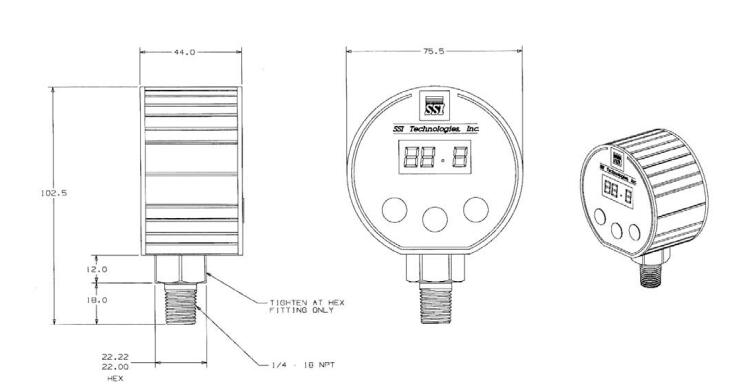
MG-3000-A-9V-R Manufacturer
SSI Technologies, LLC is an innovative company committed to precision engineering and customer support. As a partner to our customers, we invest in the development and advancement of new and emerging technologies. Since 1982, SSI has been a leader in the custom development of sensor solutions for a wide range of markets. Our technological and customization abilities, along with our experienced engineering staff help our customers surpass expectations.
Datasheet PDF
- Datasheets :
What is MG-9V Model Series?
The Media Gauge TM Model MG-9V digital pressure gauge is a stand-alone 9V battery operated multi-functional digital pressure gauge. The MG-9V digital pressure gauge contains a media isolated piezoresistive pressure sensing element, signal conditioning circuitry for temperature and calibration compensation, a 304L stainless steel input pressure port and an LCD backlit display.
Why is the MG-9V Model Series better than mechanical pressure gauges?
Because the Media Gauge TM MG-9V digital pressure gauge has better accuracy, longer life and standard multiple functions which make it is a better choice than mechanical pressure gauges.
What is the MG-9V Model Series made of?
The Media Gauge TM MG-9V digital pressure gauge is made of all laser-welded 304L & 316L stainless steel for optimal media isolation and usage in a wide variety of media.
 Decoding the Microchip PIC16F5X Series: Flash-Based 8-Bit CMOS Microcontrollers
Decoding the Microchip PIC16F5X Series: Flash-Based 8-Bit CMOS Microcontrollers29 February 2024163
![RP2040 VS ESP32[Video+FAQ]: Which one is better?](https://res.utmel.com/Images/Article/a7926785-e416-4bc7-a497-2b286c021b7c.jpg) RP2040 VS ESP32[Video+FAQ]: Which one is better?
RP2040 VS ESP32[Video+FAQ]: Which one is better?03 March 2022184547
 Unraveling the Silicon Labs C8051F000/1/2/5/6/7 and C8051F010/1/2/5/6/7 Series Mixed-Signal 32KB ISP FLASH MCUs
Unraveling the Silicon Labs C8051F000/1/2/5/6/7 and C8051F010/1/2/5/6/7 Series Mixed-Signal 32KB ISP FLASH MCUs29 February 202487
 STM32F318K8U6 Microcontroller: Technical Analysis and Overview
STM32F318K8U6 Microcontroller: Technical Analysis and Overview28 February 2024118
 A Comprehensive Guide to LTC660CN8#PBF DC/DC Switching Regulator
A Comprehensive Guide to LTC660CN8#PBF DC/DC Switching Regulator06 March 2024115
 Unraveling the Microchip ATSAMD21E17AMUT Microcontroller
Unraveling the Microchip ATSAMD21E17AMUT Microcontroller28 February 2024172
 TMS320F28069PZT: Unraveling the 32-bit ControlCARD Microcontroller by Texas Instruments
TMS320F28069PZT: Unraveling the 32-bit ControlCARD Microcontroller by Texas Instruments29 February 202471
 KSZ8081MNX Transceiver: Pinout, Equivalent and Datasheet
KSZ8081MNX Transceiver: Pinout, Equivalent and Datasheet24 January 20222489
 Development Board History and Differences from Single Board Computers (SBCs)
Development Board History and Differences from Single Board Computers (SBCs)16 May 20223828
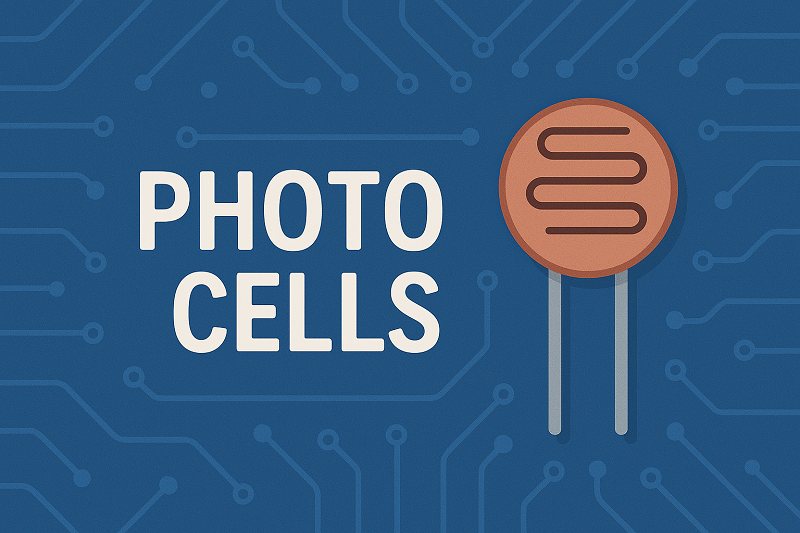 Basic Introduction to Photocell
Basic Introduction to Photocell09 April 202511869
 What is 232\485\422 Communication? Common problems of Serial Communication
What is 232\485\422 Communication? Common problems of Serial Communication29 April 20221667
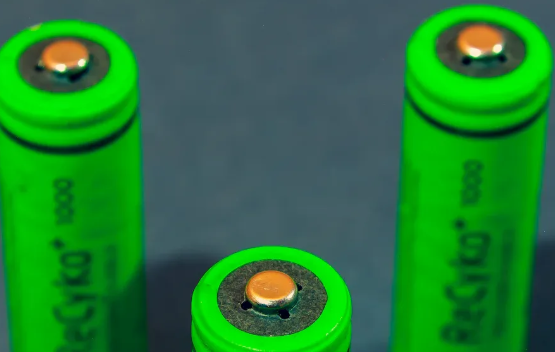 CR1220 Battery User Reviews on Leading Brands
CR1220 Battery User Reviews on Leading Brands21 August 2025750
 Semiconductor Materials:Types, Properties and Production Process
Semiconductor Materials:Types, Properties and Production Process21 October 202520891
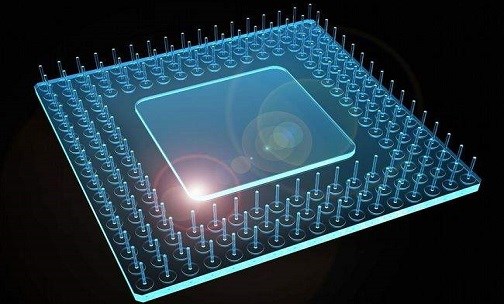 Semiconductor Equipment Industry Research
Semiconductor Equipment Industry Research25 March 20244269
 RF Front End in the 5G Era
RF Front End in the 5G Era25 October 20214644
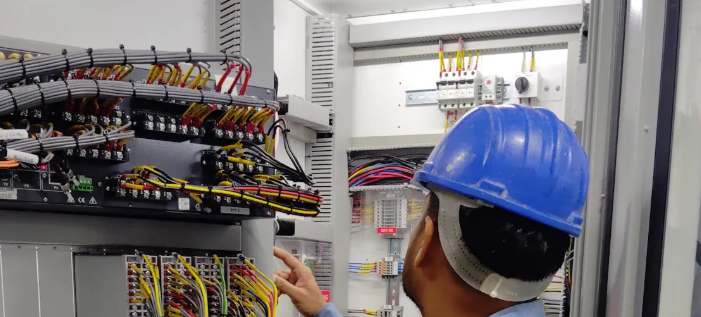 Essential Tips for Maintaining Safety Relays in Industrial Settings
Essential Tips for Maintaining Safety Relays in Industrial Settings10 July 2025485
SSI Technologies Inc
In Stock
United States
China
Canada
Japan
Russia
Germany
United Kingdom
Singapore
Italy
Hong Kong(China)
Taiwan(China)
France
Korea
Mexico
Netherlands
Malaysia
Austria
Spain
Switzerland
Poland
Thailand
Vietnam
India
United Arab Emirates
Afghanistan
Åland Islands
Albania
Algeria
American Samoa
Andorra
Angola
Anguilla
Antigua & Barbuda
Argentina
Armenia
Aruba
Australia
Azerbaijan
Bahamas
Bahrain
Bangladesh
Barbados
Belarus
Belgium
Belize
Benin
Bermuda
Bhutan
Bolivia
Bonaire, Sint Eustatius and Saba
Bosnia & Herzegovina
Botswana
Brazil
British Indian Ocean Territory
British Virgin Islands
Brunei
Bulgaria
Burkina Faso
Burundi
Cabo Verde
Cambodia
Cameroon
Cayman Islands
Central African Republic
Chad
Chile
Christmas Island
Cocos (Keeling) Islands
Colombia
Comoros
Congo
Congo (DRC)
Cook Islands
Costa Rica
Côte d’Ivoire
Croatia
Cuba
Curaçao
Cyprus
Czechia
Denmark
Djibouti
Dominica
Dominican Republic
Ecuador
Egypt
El Salvador
Equatorial Guinea
Eritrea
Estonia
Eswatini
Ethiopia
Falkland Islands
Faroe Islands
Fiji
Finland
French Guiana
French Polynesia
Gabon
Gambia
Georgia
Ghana
Gibraltar
Greece
Greenland
Grenada
Guadeloupe
Guam
Guatemala
Guernsey
Guinea
Guinea-Bissau
Guyana
Haiti
Honduras
Hungary
Iceland
Indonesia
Iran
Iraq
Ireland
Isle of Man
Israel
Jamaica
Jersey
Jordan
Kazakhstan
Kenya
Kiribati
Kosovo
Kuwait
Kyrgyzstan
Laos
Latvia
Lebanon
Lesotho
Liberia
Libya
Liechtenstein
Lithuania
Luxembourg
Macao(China)
Madagascar
Malawi
Maldives
Mali
Malta
Marshall Islands
Martinique
Mauritania
Mauritius
Mayotte
Micronesia
Moldova
Monaco
Mongolia
Montenegro
Montserrat
Morocco
Mozambique
Myanmar
Namibia
Nauru
Nepal
New Caledonia
New Zealand
Nicaragua
Niger
Nigeria
Niue
Norfolk Island
North Korea
North Macedonia
Northern Mariana Islands
Norway
Oman
Pakistan
Palau
Palestinian Authority
Panama
Papua New Guinea
Paraguay
Peru
Philippines
Pitcairn Islands
Portugal
Puerto Rico
Qatar
Réunion
Romania
Rwanda
Samoa
San Marino
São Tomé & Príncipe
Saudi Arabia
Senegal
Serbia
Seychelles
Sierra Leone
Sint Maarten
Slovakia
Slovenia
Solomon Islands
Somalia
South Africa
South Sudan
Sri Lanka
St Helena, Ascension, Tristan da Cunha
St. Barthélemy
St. Kitts & Nevis
St. Lucia
St. Martin
St. Pierre & Miquelon
St. Vincent & Grenadines
Sudan
Suriname
Svalbard & Jan Mayen
Sweden
Syria
Tajikistan
Tanzania
Timor-Leste
Togo
Tokelau
Tonga
Trinidad & Tobago
Tunisia
Turkey
Turkmenistan
Turks & Caicos Islands
Tuvalu
U.S. Outlying Islands
U.S. Virgin Islands
Uganda
Ukraine
Uruguay
Uzbekistan
Vanuatu
Vatican City
Venezuela
Wallis & Futuna
Yemen
Zambia
Zimbabwe





